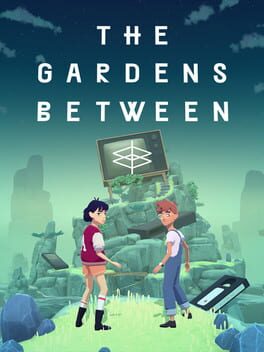The Gardens Between rewinds the linear tropes found in adventure puzzlers by bending time to illustrate the neighbourly affinity that can endearingly manifest in a shared back garden.
WHAT I LIKED:
+ Fundamentally abstract. The surreal dream-like journey of Arina and Frendt's nostalgic experience, comprising of various islands featuring shared memories, shrouds the non-verbal narrative with an endearing aesthetic that solidifies their friendship. The dioramic constellations, that are viewed upon completing a group of islands, highlighting their most fond memories before the simple yet effective climax hits home. Creating an effective allegory for childhood nostalgia.
+ Time goes by so slowly. The islands, representing the various puzzling stages that these two must reach the top of, each showcase unique objects that create the intricacy of each puzzle. For example, Frendt playing on a video games console which in turn creates a reactionary response to the world around them. However it is the core concept of timeflow manipulation that gifts The Gardens Between an innovative experience of lateral thinking. The characters are not controlled by the player, time is. It can be rewound to move Arina and Frendt back a few paces or resumed to continue their trek to the top. The logical thinking is implemented through the use of their interactions with the environment, which remains mutable with time itself. Every single stage posed a unique and refreshing challenge, producing a small yet profound memorability for each island.
+ An auditory and visual delight. The art direction is absolutely stunning. From the environmental details to the puzzling mechanics to the character models themselves. Every single angle of every single island was beautifully crafted, and the audio was just as euphoric. The sound editing for when time stops and rewinds was seamless, as well the general ambience when playing each variety of island.
+ Satisfyingly challenging. Whilst not the most brain-melting puzzler, various sequences do require lateral thinking. However the gradual rise in difficulty was sublimely integrated, with rarely any hand-holding included. Once a certain puzzle was solved, the sense of self-accomplishment was overwhelming!
WHAT I DISLIKED:
- Too many jumping cubes. Arina holds a lantern, to which it must be filled with a light source in order to activate the pedestal and the top of each island. She can place the lantern onto various jumping cubes, which allows her to walk on specific obstacles without them disappearing, before picking up the lantern again down the path. The vast majority of islands employed this mechanic as a means to move the lantern further on, without needing to adjust the types of puzzles that the two protagonists encounter. A consequence of this, was that the puzzling variance was lacking somewhat despite the change in environmental design, meaning they could be solved using the same thinking method as before.
VERDICT:
7/10 popcorn kernels being thrown at Frendt's face (poor boy...)
WHAT I LIKED:
+ Fundamentally abstract. The surreal dream-like journey of Arina and Frendt's nostalgic experience, comprising of various islands featuring shared memories, shrouds the non-verbal narrative with an endearing aesthetic that solidifies their friendship. The dioramic constellations, that are viewed upon completing a group of islands, highlighting their most fond memories before the simple yet effective climax hits home. Creating an effective allegory for childhood nostalgia.
+ Time goes by so slowly. The islands, representing the various puzzling stages that these two must reach the top of, each showcase unique objects that create the intricacy of each puzzle. For example, Frendt playing on a video games console which in turn creates a reactionary response to the world around them. However it is the core concept of timeflow manipulation that gifts The Gardens Between an innovative experience of lateral thinking. The characters are not controlled by the player, time is. It can be rewound to move Arina and Frendt back a few paces or resumed to continue their trek to the top. The logical thinking is implemented through the use of their interactions with the environment, which remains mutable with time itself. Every single stage posed a unique and refreshing challenge, producing a small yet profound memorability for each island.
+ An auditory and visual delight. The art direction is absolutely stunning. From the environmental details to the puzzling mechanics to the character models themselves. Every single angle of every single island was beautifully crafted, and the audio was just as euphoric. The sound editing for when time stops and rewinds was seamless, as well the general ambience when playing each variety of island.
+ Satisfyingly challenging. Whilst not the most brain-melting puzzler, various sequences do require lateral thinking. However the gradual rise in difficulty was sublimely integrated, with rarely any hand-holding included. Once a certain puzzle was solved, the sense of self-accomplishment was overwhelming!
WHAT I DISLIKED:
- Too many jumping cubes. Arina holds a lantern, to which it must be filled with a light source in order to activate the pedestal and the top of each island. She can place the lantern onto various jumping cubes, which allows her to walk on specific obstacles without them disappearing, before picking up the lantern again down the path. The vast majority of islands employed this mechanic as a means to move the lantern further on, without needing to adjust the types of puzzles that the two protagonists encounter. A consequence of this, was that the puzzling variance was lacking somewhat despite the change in environmental design, meaning they could be solved using the same thinking method as before.
VERDICT:
7/10 popcorn kernels being thrown at Frendt's face (poor boy...)
